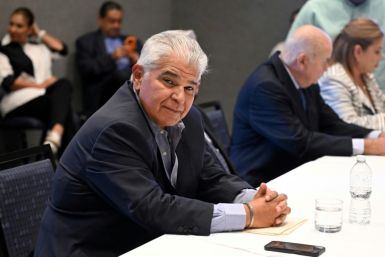Study Reveals The Most Unhappy Cities in The US
The Unhappy Regions Mostly included The Less Prosperous Ones

The United Nations conducts a survey every year and determines the happiest countries on the basis of the polls. The results are out in the World's Happiness Report. This however takes all the nations into account. A recent research sought to identify the unhappiest cities in the United States.
The analysis revealed the unhappiest cities in the US and also found out that young people were still willing to go there if there were good job opportunities. Co-author of the analysis Joshua Gottlieb of the University of British Columbia's Vancouver School of Economics, suggested that people may be deciding to trade happiness for other gains.
The U.S. National Bureau of Economic Research released the working paper "Unhappy Cities," last week. A large survey was conducted as a part of it that questioned the respondents about how happy and content they were and probed into their satisfaction levels with life. They found that individuals were willing to let go of their happiness in exchange for a higher income or lower accommodation rates. This was indicated by a measure, which is often interpreted as a measure of happiness.
Gottlieb said, "Our research indicates that people care about more than happiness alone, so other factors may encourage them to stay in a city despite their unhappiness." His explanation meant that researchers and policy-makers were not to consider an increase in reported happiness as an overriding objective.
Gottlieb and his team explored the different regions of the U.S. where the satisfaction levels were low. They found that residents of declining cities appeared less happy than those who live in other parts of the U.S.
People residing in the region since long appeared equally unhappy as those who just moved in. This indicated that the city's unhappiness persists over time. An analysis of the city's historical data revealed an unhappy past as well; even when they were prosperous the happiness quotient was not high.
The 10 happiest metropolitan regions with a more than 1 million population (as of 2010) were Richmond-Petersburg (VA), Norfolk-Virginia Beach-Newport News (VA), Washington, DC, Raleigh-Durham (NC), Atlanta (GA), Houston(TX), Jacksonville (FL), Nashvillle (TN), West Palm Beach-Boca Raton(FL) , Middlesex-Somerset-Hunterdon (NJ).
The 10 unhappiest metropolitan regions with a population greater than 1 million (as of 2010) are New York (NY), Pittsburgh (PA), Louisville (KY), Milwaukee (WI), Detroit (MI), Indianapolis (IN), St. Louis (MO), Las Vegas (NV), Buffalo (NY) and Philadelphia (PA).
U.S. metropolitan areas with the highest reported happiness are Charlottesville (VA), Rochester (MN), Lafayette (LA), Naples (FL), Baton Rouge (LA), Flagstaff (AZ), Shreveport (LA), Houma (LA), Corpus Christi (TX) and Provo (UT).
The least happy American regions are Scranton (PA), St. Joseph (MO), Erie (PA), South Bend (IN), Jersey City (NJ), Johnstown (PA), Non-metropolitan West Virginia, Springfield (MA), New York (NY) and Evansville-Henderson (IN-KY).






